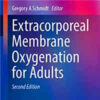This Minimally Invasive Technique Could Reduce the Need for Open-Heart Surgery
smithsonianmag.comCurrently, the majority of individuals who undergo transcather aortic valve replacement (TAVR), a minimally invasive alternative to open-heart surgery—are elderly or subject to compounding complications such as kidney disease. Thanks to a pair of new studies published in the New England Journal of Medicine, however, TAVR is poised to become an increasingly accessible option for low-risk patients, including the young and generally healthy.
Compared to traditional open-heart surgery, which involves cracking the chest open and stopping the heart, TAVR is a relatively simple procedure. Cardiologists use a catheter to insert a replacement valve via an incision in the patient’s groin, Michelle Cortez writes for Bloomberg, and then thread the device into place. According to The New York Times’ Gina Kolata, recovery takes days rather than months.
Clinical trials suggest TAVR is just as beneficial as, or perhaps even better than, open-heart surgery for low- and high-risk patients alike. With TAVR, most patients are home within 24 hours and back to normal within a week.

















